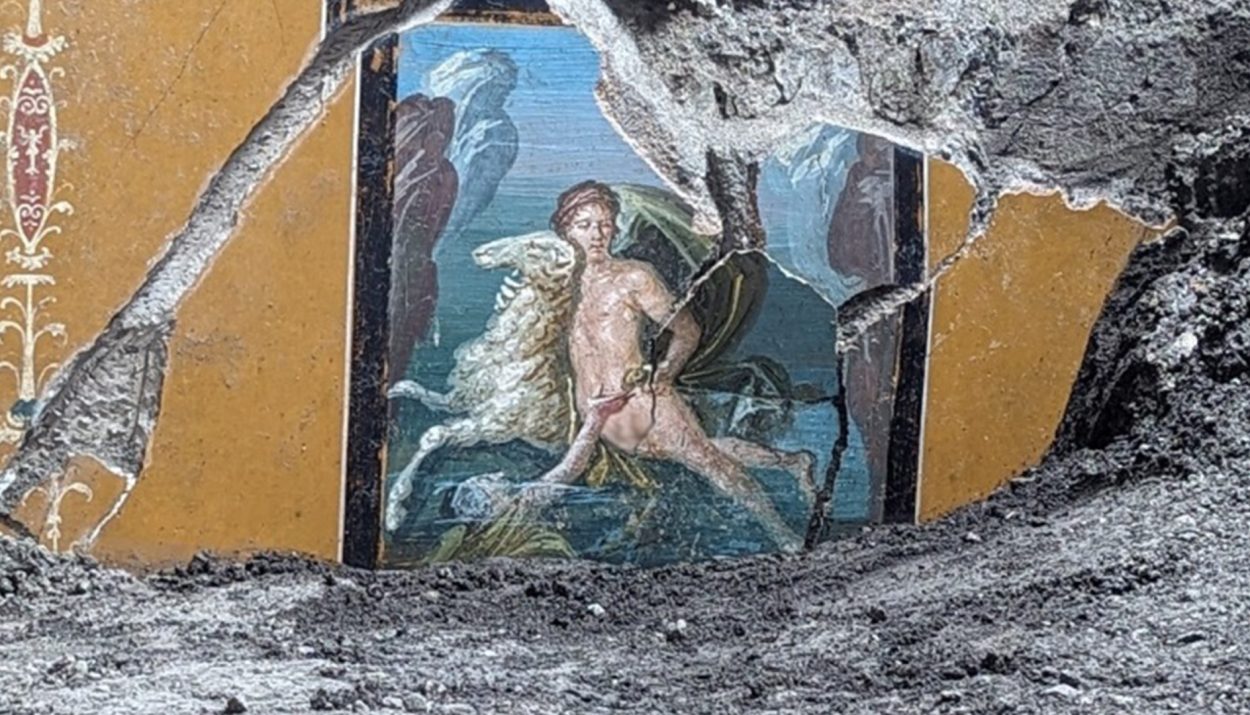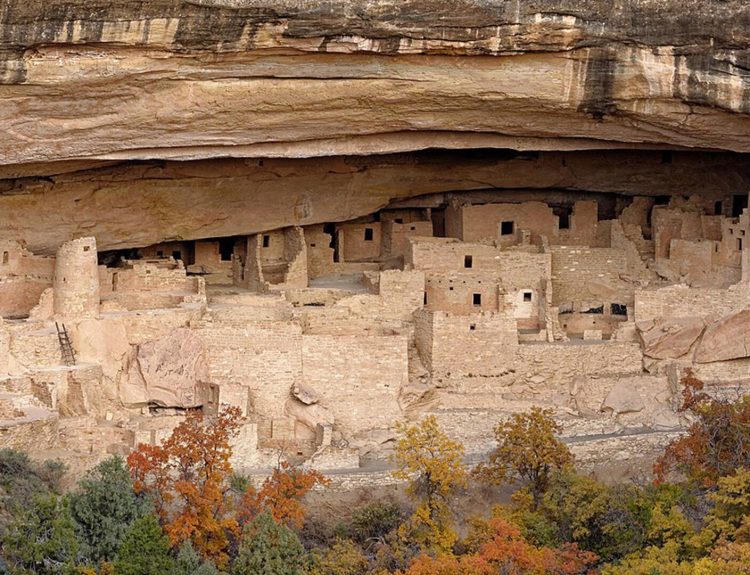The ancient and ill-fated city of Pompeii has fascinated scholars and archaeologists for years. An ongoing excavation of the House of Leda in Pompeii has revealed a lavish and vibrant painting that was preserved in the volcanic ash for 2,000 years.
The exquisite artwork is the latest in a series of discoveries made in the ruins of Pompeii and adds another piece of the complex puzzle that reveals what life was like in upscale Pompeii in the days before tragedy struck.
A Thriving and Wealthy City
Pompeii, situated near Italy’s Bay of Naples, was founded in the 6th century BC. By the 1st century AD, it was a thriving and prosperous city. Pompeii was home to many Roman elites who sought to surround themselves with beauty.
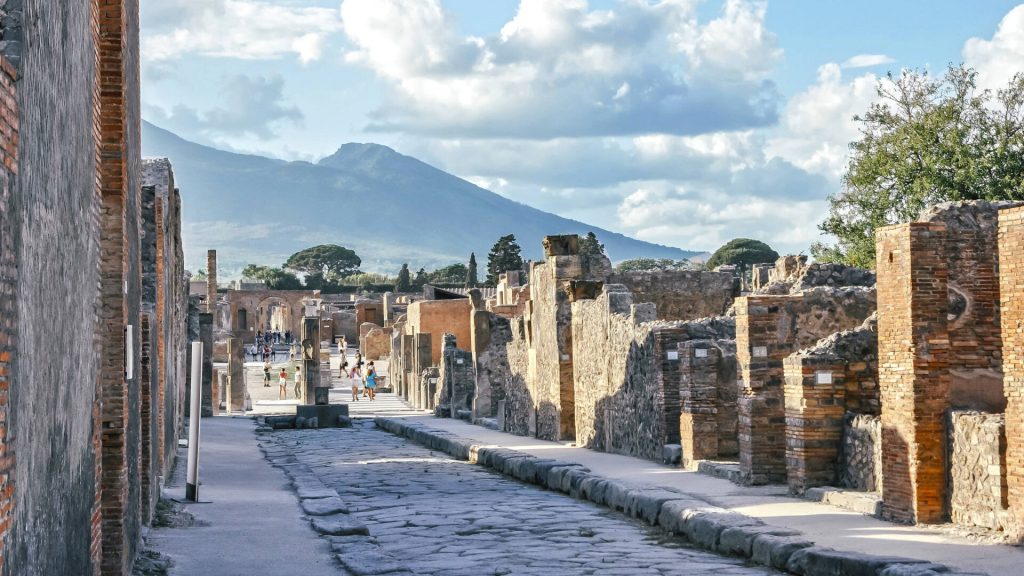
The city’s location wasn’t the only attractive feature of Pompeii. The city was an important trading port which boosted the economy. The city was well-designed and had all the finest amenities, including an amphitheater, public baths, great temples, and bustling markets.
Lifestyles of the Rich and Famous
The wealthiest citizens of Pompeii spared no expense in making their private residences showplaces of their status. Homes featured intricate mosaics and ornate tilework. There were lavish frescoes on the walls.
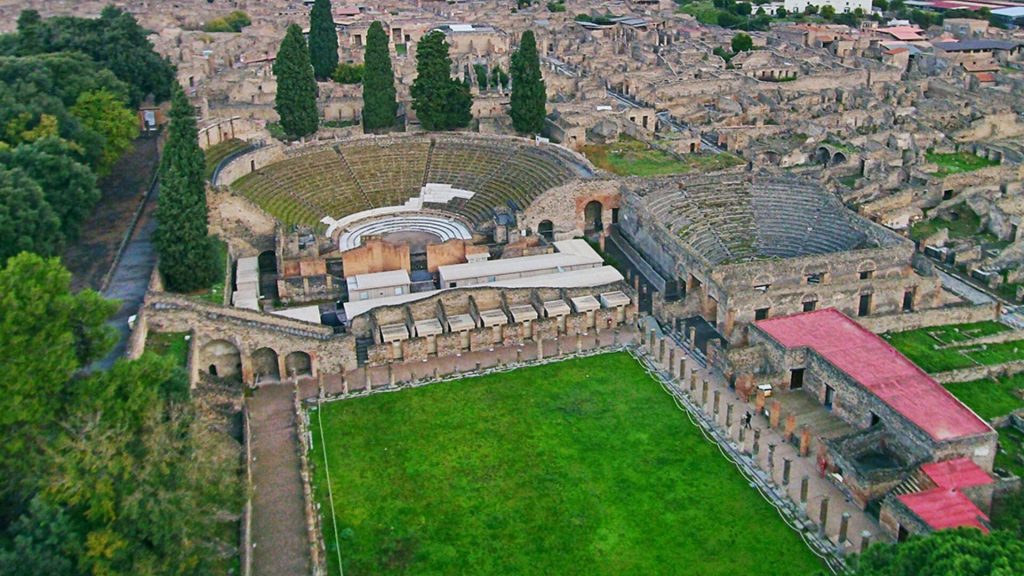
Art and beauty were valued in ancient Pompeii. Residents collected and displayed art in their homes, including paintings, statues, and mosaics.
A Catastrophic Volcanic Eruption
Pompeii’s only drawback was that it was built on the side of Mount Vesuvius. In 79 AD, the volcano roared back to life and erupted with devastating results. The entire city of Pompeii was destroyed and completely buried under a thick layer of volcanic ash.

Deadly gasses from the eruption reached Pompeii first. The city’s residents fell dead and were covered in pumice and ash. The suddenness of the eruption meant that Pompeii was preserved as a moment in time.
Rediscovering Pompeii
In the late 16th century, Pompeii was rediscovered when Domenico Fontana, who was excavating the nearby town of Herculaneum, uncovered an inscription that read “Rei publicae Pompeianorum”. Excavation work began at Pompeii in 1748.
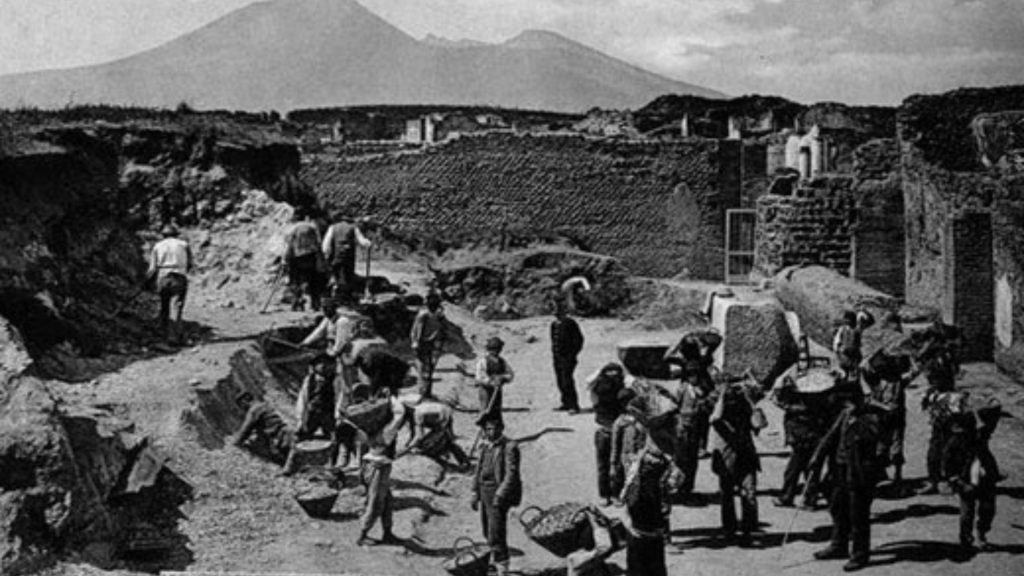
Early on, the digs at Pompeii were focused more on recovering valuable art and artifacts than on preserving the unique location. Still, the digs conducted at Pompeii in the mid-18th century mark the beginning of archaeology as a scientific field.
The House of Leda and the Swan
The House of Leda in Pompeii is located on Via del Vesuvio and was discovered when work was being done to make the ruins of Pompeii safer for archaeologists working there. It was so named because a beautiful and detailed fresco in one of the bedrooms illustrates the mythical story of Leda and the swan.
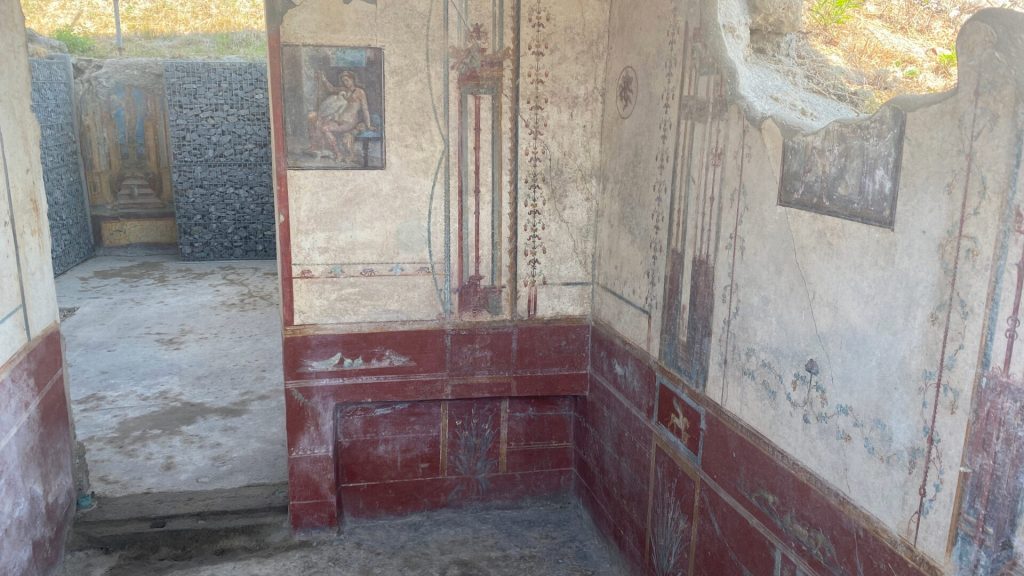
Researchers have been excavating the House of Leda for the last several years. During that time, archaeologists have found a collection of art that focuses on classic stories from mythology with an emphasis on the sexual and salacious. The story of Leda and the swan is a perfect example of this.
The Newly Found Painting
The newly found painting is a fresco, an artistic technique that involves applying paint onto the wet … of “fresh” … plaster of a wall or ceiling. The word “fresco” is Italian for “fresh”. This style of wall murals was quite popular in ancient Rome because the paintings remained bright and colorful for a long time.
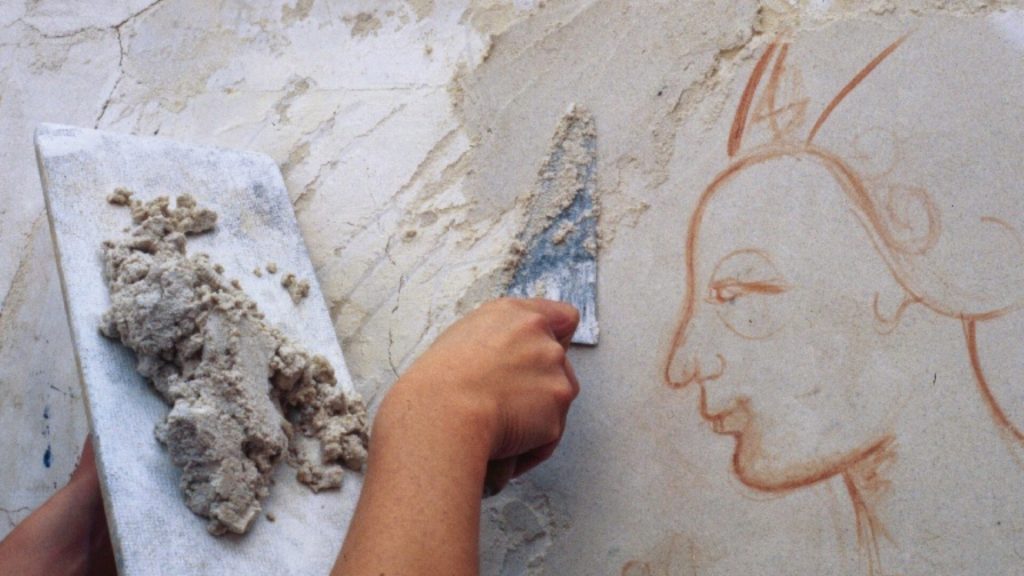
According to a spokesperson for the Pompeii Archaeological Park – the arm of the Italian government that oversees the archaeological work at Pompeii – the painting is incomplete because of damage to the wall. However, the volcanic ash preserved the pigment.
Figures from Greek Mythology
The most recent discovery in the House of Leda is a stunningly vibrant painting of two figures from Greek mythology. It tells the story of Phrixus and Helle, twins, who flee from their evil stepmother in a strange way.
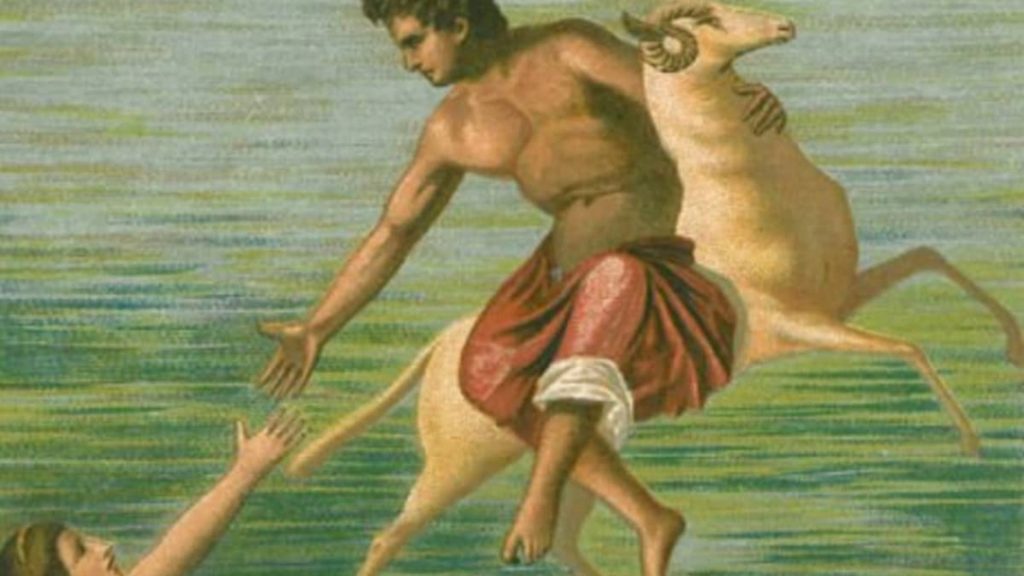
The twins ride on the back of a magical ram as it swims across the strait separating Europe from Asia. Although Helle drowns during the crossing, Phrixus survives and later sacrifices the ram to Zeus.
“A Privilege and a Joy“
According to British archaeologist Dr. Sophie Hay who works at the Pompeii Archaeological Park, “Witnessing the vibrant colors of freshly uncovered frescoes at Pompeii is a privilege and a joy that never fades.”

She added that the fresco is in remarkable condition for its age. The colors of the pigments are still bright, and the intricate brushwork is visible. In all, she called this find a “magical discovery.”
Damage to the Fresco
As mentioned, the fresco has sustained damage and is incomplete. According to Dr. Hay, the upper right portion of the painting is missing. In addition, there are two large cracks near the middle of the artwork.

Finding the fresco is proof that Pompeii still has many secrets to be revealed. The city was large and sprawling meaning that there are more places like the House of Leda to be found and excavated.
The Final Moments of Helle’s Life
The fresco depicts the final moments of Helle’s life. According to the myth, Phrixus and Helle escape the clutches of Ino, their stepmother, who is intent on getting rid of the twins. They mount a magical ram with golden wool to make their escape.

In some versions of the story, the ram can fly. In others, it swims. Either way, the legend tells us that the sister, Helle, falls from the ram and into the treacherous water of the strait where she drowns. The fresco shows Helle struggling in the water and reaching a hand to her brother, Phrixus, for help moments before she drowns.
Classic Legends Were a Popular Subject Matter for Ancient Roman Artists
Stories from mythology were commonly depicted in artwork. As Dr. Hay explained, “Seeing the latest discovery of a mythological scene – Phrixus seated on a ram while his sister, Helle, drowns – in the context of the room it decorated is no exception.”
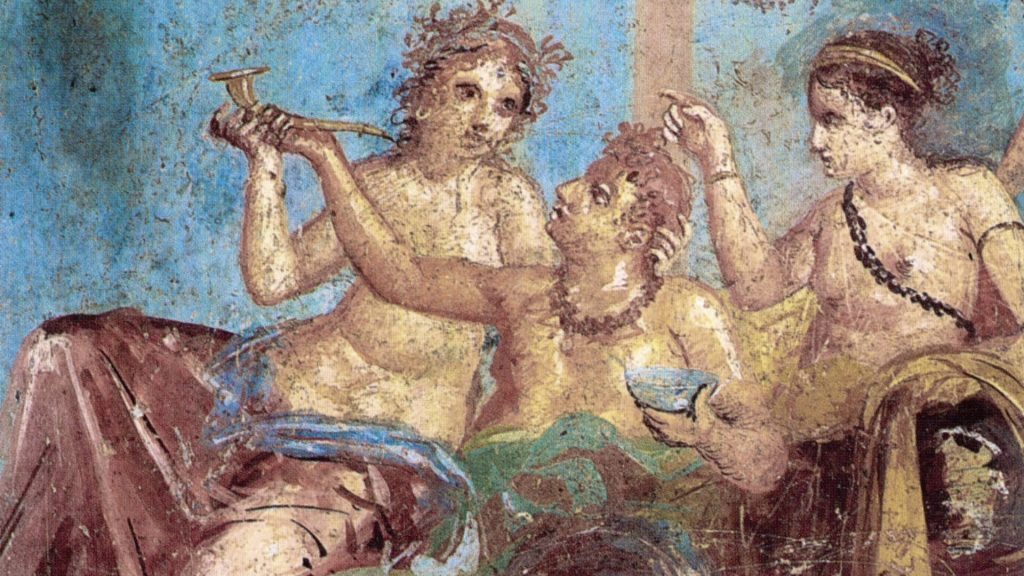
While the story of Phrixus and Helle is tragic, it is not as salacious as some of the other myths. The residents of Pompeii seemed to particularly love myths that featured sexual improprieties.
The Fresco of Leda and the Swan
The House of Leda was named because of the prominent fresco in one of the villa’s bedrooms. This mural shows the moment when the god Zeus, transformed into a male swam, rapes Leda.
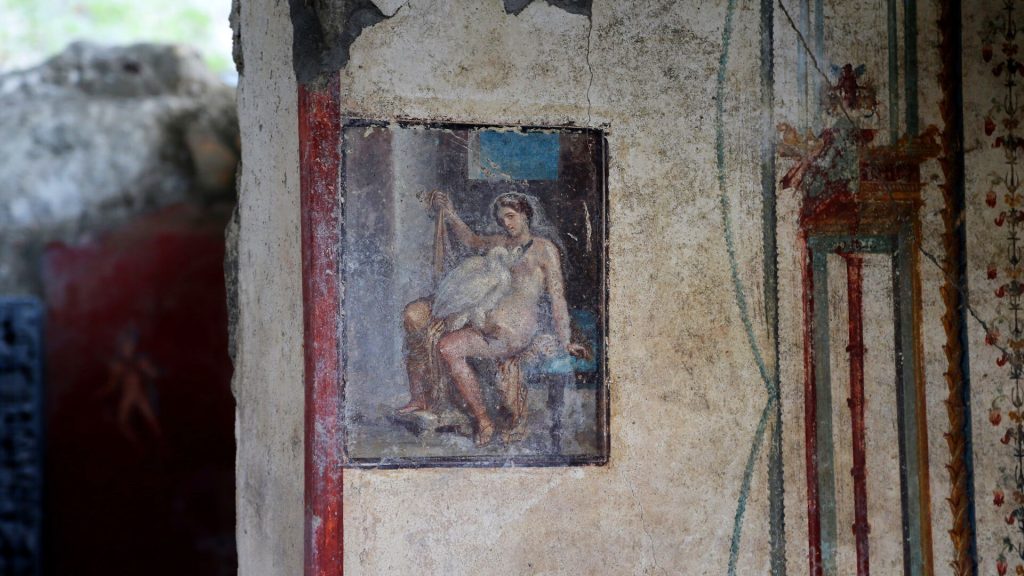
This sort of sexual encounter between a human and an animal intrigued and delighted the people of Pompeii. Even the rape of a woman was not vilified but celebrated in artwork.
The Newly Found Painting Is Rather Mild
The subject matter in the newly discovered fresco at the House of Leda is rather mild, however, according to Dr. Andrew Sillett, a classics professor at the University of Oxford in England, “Not all the art in the house is like that.”

He explained, “In the entrance hall, visitors are greeted by a large painting of Priapus, a fertility god, placing his enormous [expletive] on a set of scales to see how it measures up to the fruits of that year’s harvest.”
A New Attraction for Visitors
The ruins of Pompeii are a popular tourist destination. In fact, roughly four million people visit the site each year. Many of the most impressive and noteworthy artifacts from Pompeii are on display at the Antiquarium of Pompeii.

This museum space houses the permanent collection of Pompeii artifacts. Dr. Hay hopes that the newly discovered fresco will soon be on display so that the public can enjoy the exquisite and vibrant painting.

